Explorer 1
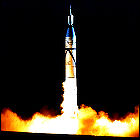 The United States succeeds in launching its own artificial satellite, Explorer 1, atop a Juno 1 rocket. Instruments developed by Dr. James Van Allen reveal the existence of radiation surrounding the Earth, and the areas of radiation are subsequently named the Van Allen radiation belts. The satellite itself is designed by the Jet Propulsion Laboratory and remains in orbit until 1970 – just the first hint of JPL’s knack for making spacecraft that last longer than their rated lifespans.
The United States succeeds in launching its own artificial satellite, Explorer 1, atop a Juno 1 rocket. Instruments developed by Dr. James Van Allen reveal the existence of radiation surrounding the Earth, and the areas of radiation are subsequently named the Van Allen radiation belts. The satellite itself is designed by the Jet Propulsion Laboratory and remains in orbit until 1970 – just the first hint of JPL’s knack for making spacecraft that last longer than their rated lifespans.

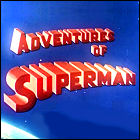 The 92nd episode of The Adventures Of Superman airs in syndication, starring George Reeves, Noel Neill, and Jack Larson. This is the sixth season premiere.
The 92nd episode of The Adventures Of Superman airs in syndication, starring George Reeves, Noel Neill, and Jack Larson. This is the sixth season premiere.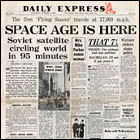 Under the direction of President Eisenhower, the U.S. Department of Defense establishes a high-tech think tank, the Advanced Research Projects Agency (ARPA), to conduct scientific and technological research with both national security implications and purely for technological advancement. The formation of ARPA is a direct response to the Soviet launch of the Sputnik satellite, and in the years ahead ARPA will lay the cornerstone of what will later become known as the Internet, as well as making significant strides in space science, though the space-related part of ARPA’s initial charter will later be transferred to a new agency called NASA. As the Cold War heats up, ARPA will be renamed DARPA (Defense Advanced Research Projects Agency) and its slate of R&D projects will become almost entirely military-oriented.
Under the direction of President Eisenhower, the U.S. Department of Defense establishes a high-tech think tank, the Advanced Research Projects Agency (ARPA), to conduct scientific and technological research with both national security implications and purely for technological advancement. The formation of ARPA is a direct response to the Soviet launch of the Sputnik satellite, and in the years ahead ARPA will lay the cornerstone of what will later become known as the Internet, as well as making significant strides in space science, though the space-related part of ARPA’s initial charter will later be transferred to a new agency called NASA. As the Cold War heats up, ARPA will be renamed DARPA (Defense Advanced Research Projects Agency) and its slate of R&D projects will become almost entirely military-oriented.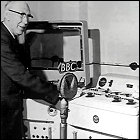 The British Broadcasting Corporation, in order to meet its producers’ requests for more unusual sound effects and music than is presently held in its sound library, establishes the BBC Radiophonic Workshop in room 13 of the BBC’s Maida Vale recording studios. Concentrating on tape manipulation and found sounds altered with analog effects (and only later delving into the earliest waves of analog synthesizers), the Workshop produces music for such legendary BBC productions as The Quatermass Experiment and the theme music for Doctor Who. Founding members include Desmond Briscoe, Daphne Oram and Dick Mills.
The British Broadcasting Corporation, in order to meet its producers’ requests for more unusual sound effects and music than is presently held in its sound library, establishes the BBC Radiophonic Workshop in room 13 of the BBC’s Maida Vale recording studios. Concentrating on tape manipulation and found sounds altered with analog effects (and only later delving into the earliest waves of analog synthesizers), the Workshop produces music for such legendary BBC productions as The Quatermass Experiment and the theme music for Doctor Who. Founding members include Desmond Briscoe, Daphne Oram and Dick Mills.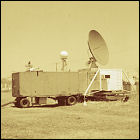 The U.S. Weather Bureau uses a mobile Doppler radar transmitting and receiving in the 3cm bandwidth to measure wind speeds in a tornado striking El Dorado, Kansas, which kills 13 people living in that city. With Doppler radar’s ability to detect and measure the velocity of wind and rain moving toward and away from the radar itself, it is ideally suited for tornado observations and detection. This mobile radar is later given to the Bureau’s National Severe Storms Laboratory in the 1960s, and is the beginning of a lengthy research program that culminates in the nationwide rollout of Doppler-based NEXRAD (Next Generation Radar) in the 1990s.
The U.S. Weather Bureau uses a mobile Doppler radar transmitting and receiving in the 3cm bandwidth to measure wind speeds in a tornado striking El Dorado, Kansas, which kills 13 people living in that city. With Doppler radar’s ability to detect and measure the velocity of wind and rain moving toward and away from the radar itself, it is ideally suited for tornado observations and detection. This mobile radar is later given to the Bureau’s National Severe Storms Laboratory in the 1960s, and is the beginning of a lengthy research program that culminates in the nationwide rollout of Doppler-based NEXRAD (Next Generation Radar) in the 1990s.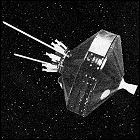 Also referred to as “Pioneer 0”, the Pioneer space probe is launched by the US Air Force, with the intention of sending it to the moon. Just over a minute after Pioneer’s Thor-Able booster lifts off, the first stage explodes, and Pioneer’s short flight ends in the Atlantic Ocean. The next Pioneer space probe will be handled by the newly formed National Aeronautics and Space Administration later in 1958.
Also referred to as “Pioneer 0”, the Pioneer space probe is launched by the US Air Force, with the intention of sending it to the moon. Just over a minute after Pioneer’s Thor-Able booster lifts off, the first stage explodes, and Pioneer’s short flight ends in the Atlantic Ocean. The next Pioneer space probe will be handled by the newly formed National Aeronautics and Space Administration later in 1958.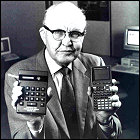 Implementing a revolutionary new take on an idea that has existed on paper since the 1940s, recently-hired Texas Instruments engineer Jack Kilby demonstrates the first fully-functional integrated circuit, with all of the electronic components encased in germanium. While the U.S. Air Force immediately places an order for TI’s new integrated circuits, other engineers continue to refine Kilby’s invention, with Fairchild Semiconductor producing ICs encased in silicon. The move to silicon for ICs leads to smaller electronic devices and the development of microcomputer technology.
Implementing a revolutionary new take on an idea that has existed on paper since the 1940s, recently-hired Texas Instruments engineer Jack Kilby demonstrates the first fully-functional integrated circuit, with all of the electronic components encased in germanium. While the U.S. Air Force immediately places an order for TI’s new integrated circuits, other engineers continue to refine Kilby’s invention, with Fairchild Semiconductor producing ICs encased in silicon. The move to silicon for ICs leads to smaller electronic devices and the development of microcomputer technology.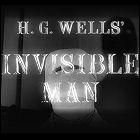 The first episode of H.G. Wells’ The Invisible Man, based on Wells’ story, premieres on ITV; the series will be shown later in the U.S. on CBS. Lisa Daniely and Deborah Watling (Doctor Who) star.
The first episode of H.G. Wells’ The Invisible Man, based on Wells’ story, premieres on ITV; the series will be shown later in the U.S. on CBS. Lisa Daniely and Deborah Watling (Doctor Who) star.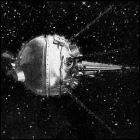 Less than a year after launching the first Earth-orbiting artificial satellite, the Soviet Union makes its first attempt to launch an unmanned space vehicle toward the moon. The flight of Luna E-1 #1 lasts a mere 92 seconds before its launch vehicle explodes in mid-air. Further attempts will be made by Sergei Korolev’s team of engineers to launch a lunar spacecraft, giving the escalating international space race a new (if somewhat obvious) target for both unmanned and crewed space flights over the next decade.
Less than a year after launching the first Earth-orbiting artificial satellite, the Soviet Union makes its first attempt to launch an unmanned space vehicle toward the moon. The flight of Luna E-1 #1 lasts a mere 92 seconds before its launch vehicle explodes in mid-air. Further attempts will be made by Sergei Korolev’s team of engineers to launch a lunar spacecraft, giving the escalating international space race a new (if somewhat obvious) target for both unmanned and crewed space flights over the next decade.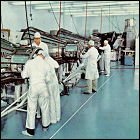 The newly-formed NASA reveals a bold plan: Project Mercury will be an extensive program to create a vehicle capable of safely sending men into Earth orbit and returning them in one piece. The rigorous selection process to find the country’s first space pilots – astronauts – begins, focusing on combat pilots and especially test pilots with experience in flying unproven experimental aircraft (the Mercury spacecraft will definitely qualify for this description).
The newly-formed NASA reveals a bold plan: Project Mercury will be an extensive program to create a vehicle capable of safely sending men into Earth orbit and returning them in one piece. The rigorous selection process to find the country’s first space pilots – astronauts – begins, focusing on combat pilots and especially test pilots with experience in flying unproven experimental aircraft (the Mercury spacecraft will definitely qualify for this description).